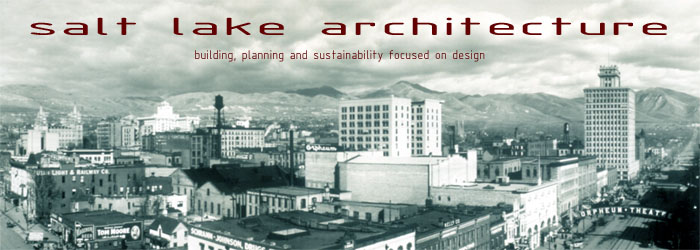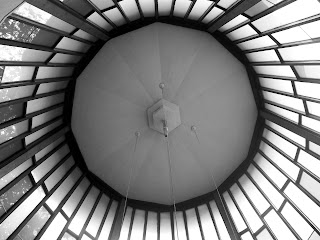
(Image Source)
In case you haven't heard, Salt Lake lost a treasure today. 1547 Yale Avenue in the Yalecrest Historic District was torn down by the owner, Tom Hulbert. The home is right in the heart of the Historic District, a district that was the feature of the 2009 Utah Heritage Foundation Home Tour.
The home was purchased by the present owners in 2007, at the very same time the Yalecrest district received the designation from the National Register of Historic Places. From the owners website, they felt it was a "beautiful home" and desired to expand on the 2700 square foot home "by adding an addition to the rear of the home." If you click over to the owners website, you cannot read the text unless you highlight it for some reason. He goes through the decision-making process and attempts to defend his actions.
Apparently there were structural problems that needed to be addressed in this 1924 home. According to the engineers on the project, the cost to restabilize the home for another 80 years would have only been $150,000. The owner is not willing to pay that, but is willing to pay upwards of $1 million to build a new 7,200 square foot home? $100/square foot for a 7,200 square foot home will cost $720,000. And I doubt he will get the new home for that cheap.
The owners website documents what they want to do and why, but it all feels hollow and forced. He is thorough, but ultimately made a poor choice. What he and the community of Salt Lake lost is irreplaceable, no matter what home is built there now. In a historic district and neighborhood, there is almost always the option of restoration or new foundation work, which would be cheaper than starting over. And comparing the original home to the new design, well, there really is no comparison.

(Image source)
My number one question is: Why didn't he think to have an 85-year-old home checked out before purchasing to see if there were structural deficiencies and to confirm that he would be able to easily add onto it as was his original plan? THE HISTORIC HOMES AND UNIQUE ARCHITECTURE ARE THE ATTRACTION OF THIS NEIGHBORHOOD that he moved into. So he moves in and two years later has destroyed the very thing he purchased that helps make this neighborhood beautiful and unique! I truly do not understand.
To their credit, they actually tried to sell the home earlier this year. On the 28th of April 2009, the home was put on the market for $945,000. On the 11th of June 2009, the home price was reduced to $899,500. After 62 days, less than a month ago, it was taken off the market. According to the Salt Lake Tribune article, there was an $875,000 cash offer that they declined and opted to destroy the home instead and start over.
I love the remarks included in the real estate report when the home was on the market, “Curb appeal is unbeatable! Home has been prepared for total remodel.”

(Image source - Salt Lake Tribune)
Prior to receiving a demolition permit, a building permit was approved for the new home. While the new design at least has some sensitivity to the site, it is still a 7,200 square foot home. That’s quite an addition. So you mean to tell me that they would have been happy with their existing 2,700 square foot home purchase and a small addition in the back, even if there were no foundation problems? That’s a far cry from this new 7,200 square foot home. It sounds like this is what they wanted from the beginning. In todays slow high-end market, an $875,000 offer for the existing home was a good one. They could have taken it and built their 7,200 square foot home in almost ANY OTHER NEIGHBORHOOD IN UTAH and no one would have cared one bit. But instead they chose to destroy a treasure of the city in one of the few Historic Districts Salt Lake City has. What a travesty. What a loss. What a sad day.
City Wide Historic Preservation Master Plan
City Weekly article
View salt lake architecture in a larger map
























